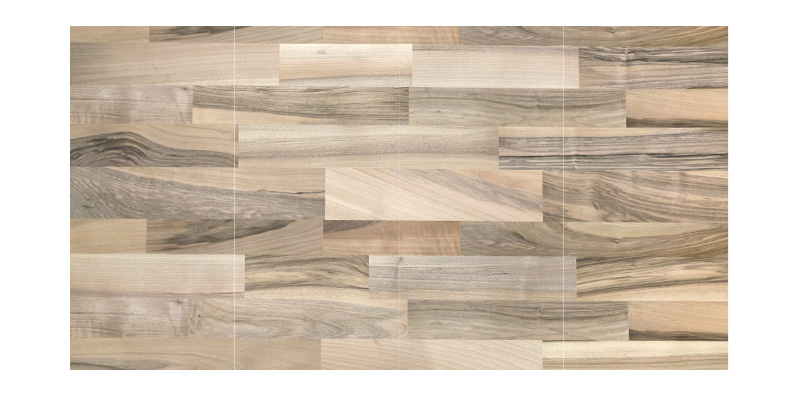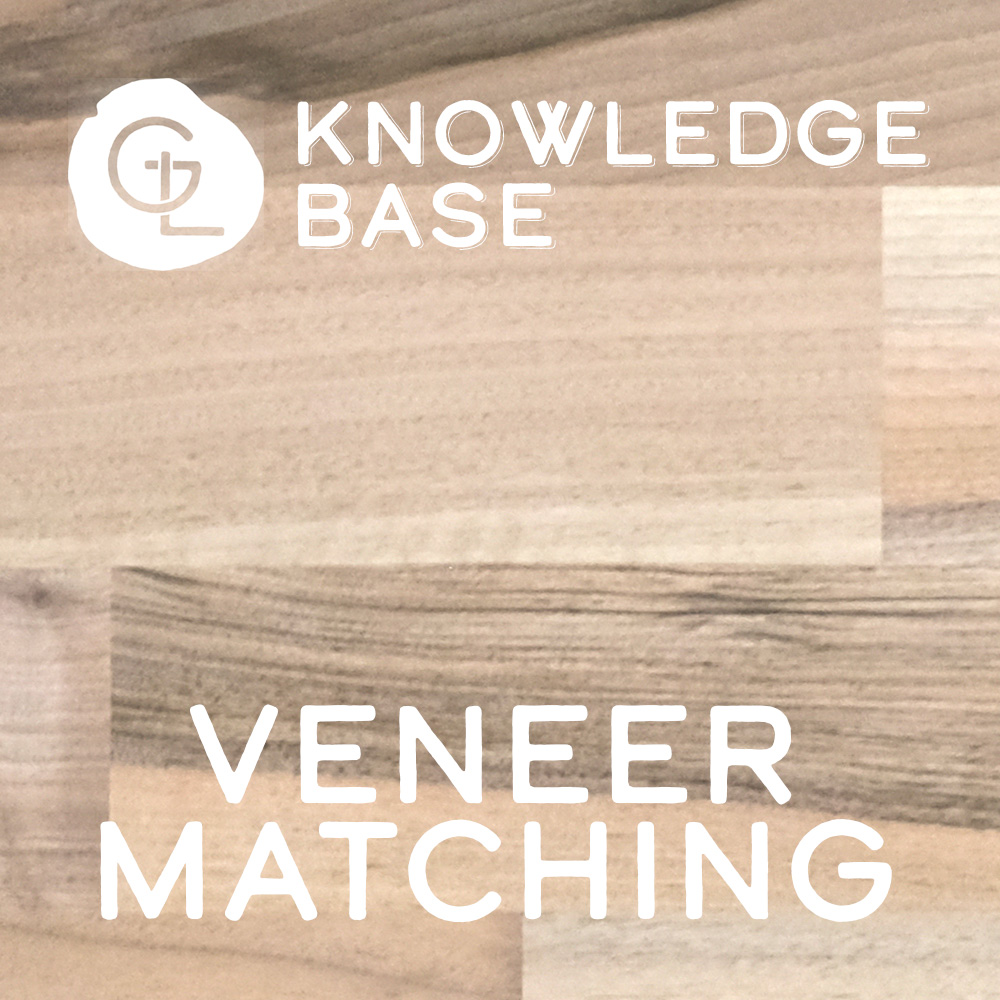There are three common methods used to join veneer components:
BOOK match,
SLIP match,
and PLANK match.
Click any title to learn more about these techniques.
Veneer components are unfolded from the stack and “flipped” 180 degrees to achieve a mirror image from component to component. This is very common matching done for plain sliced (or flat cut) veneers as it delivers a pleasing alternate pattern that does not tend to “lean” from one side of the face to the other.
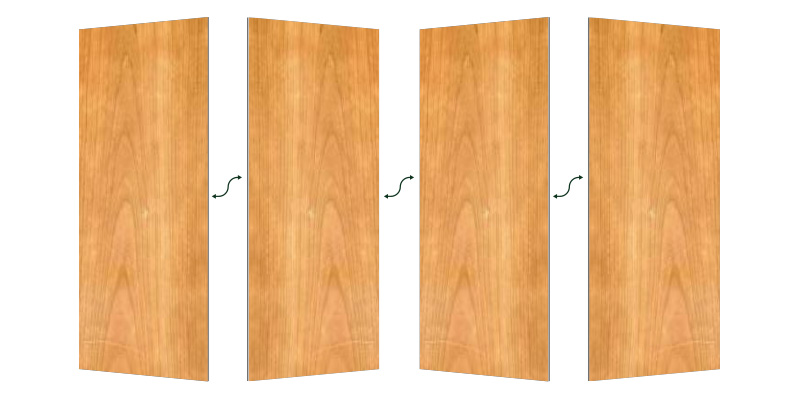
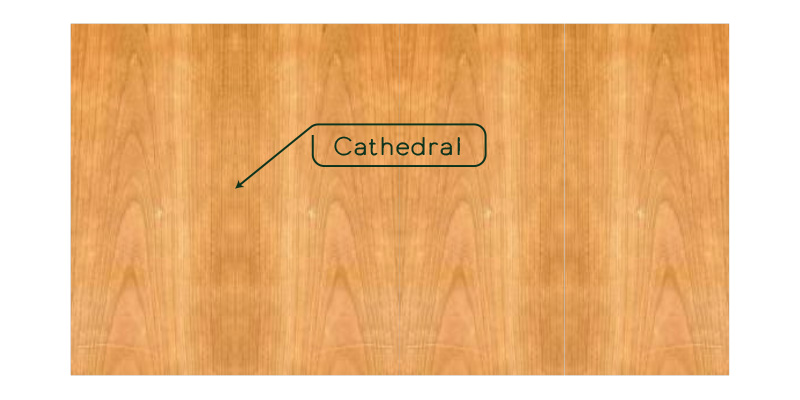
Notice that the “cathedral” in this sample is in mirror image from component to component.
Book matching is also used and amplified when creating faces made of burl components as shown below. Notice the “book” matching is done on both the vertical and horizontal axis. This girls burl veneer its distinctive kaleidoscope effect.

Each successive component from a stack is laid out without any flipping so the same side is always up and in sequence to the previous component.

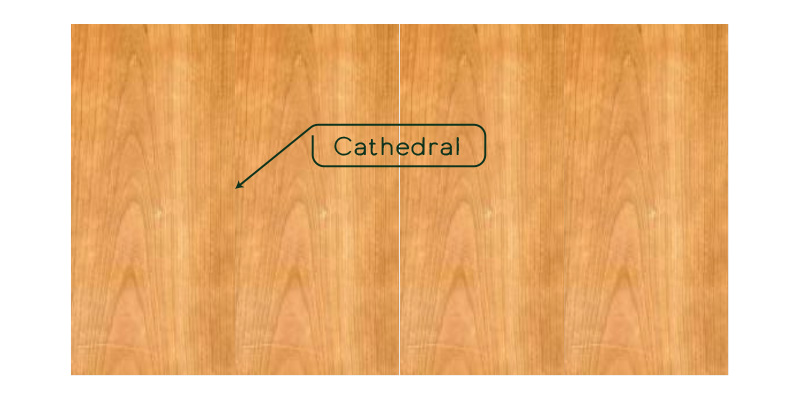
Notice the effect this has on the look of the face, each “cathedral” in this material is slightly left justified and offset the same amount from component to component.
Often times veneer components can have growth patterns that are not perfectly symmetrical. On plain sliced veneer, the cathedrals can be slightly skewed or displaced off-axis. With quarter cut veneer the grain pattern may not be perfectly straight, rather it may be off-axis or have a “sweep” or bend to it along the length of the component. Using an appropriate veneer match can mask these natural appearances and yield the desired results in the face.
Below is an example of the same slip matched veneer components that are 5 degrees off-axis to the right. As you can see, the result tends to “lean” to the right.
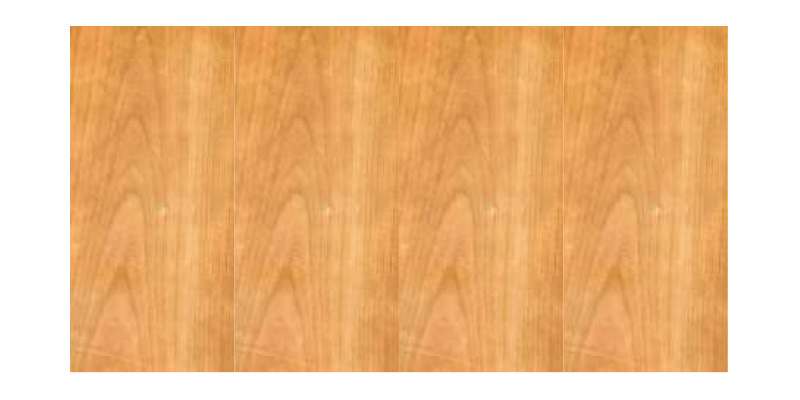
This face below is the same veneer components ( 5 degrees off-axis) with a “book” match. Notice that the “leaning” is cancelled out by the alternating components and yields a pleasing and feature-rich grain pattern.
This is why book matching veneer that is plain-sliced or flat cut is the de-facto standard with most veneer species …. except for species that demonstrate extreme barber-pole effect when plain sliced.
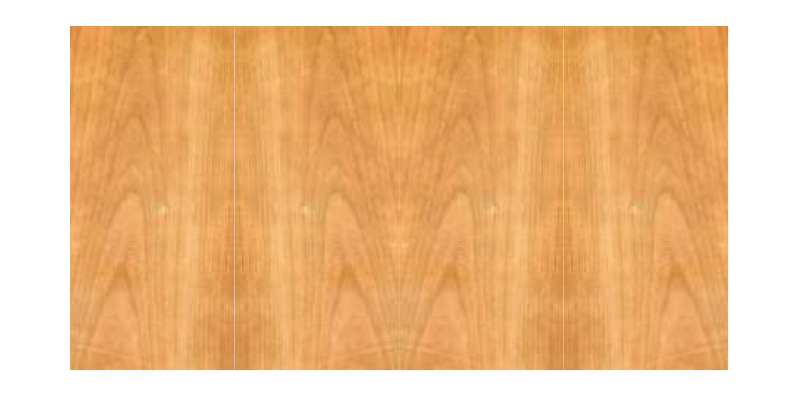
This matching technique is typically used in flooring. While the discriminating buyer will specify color and cut of the veneer, the components do not need to match in any way, they can be of different widths and lengths. In lower grades, the components can even be of differing cuts (flat cut, quarter cut, rift cut). This matching technique is beginning to show signs of increased popularity; particularly where long horizontal wall or horizontal elevation patterns are desired.
